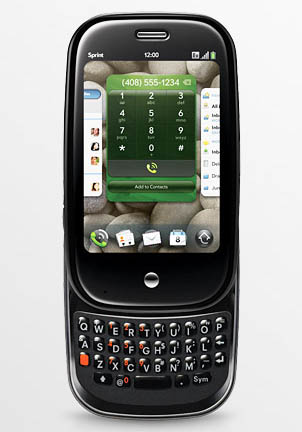This article is more than 1 year old
iPhone v Pre - the celebrity smartphone deathmatch
Every feature unearthed, every quirk revealed
Software
Before we dig into how software - both apps and OS - is the true distinguishing aspect between the two phones, one overarching caveat: Palm's webOS, although Linux-based, is a whole new ballgame, while the iPhone's OS is not only already on version 3.0, but is also a subset of Mac OS X.
In other words, you should cut webOS a bit of slack for being a version 1.0 (well, 1.03 and 1.04 in our testing), while also assuming that iPhone Software 3.0 is rather set in its ways and may very well not have any major surprises up its sleeve in future versions.
Which, if true, is too bad, because Apple has a few things to learn from Palm when it comes to software.
Multitasking: The Pre's webOS is a full-fledged multitasking OS. With the exception of such niceties as the iPod app's background operation and push notification, the iPhone is a one-app-at-a-time device.
webOS uses a card metaphor to let you move among different apps that are running on the Pre - when you choose to minimize an app, its display shrinks to about one-third size and moves off to the left when you open a new app.
Most apps, even when minimized, remain alive. Rotation still affects minimized photos and web pages, for example, although videos stop running in the background and web pages stop loading.
Of course, loading up a lot of apps into the background eats up both RAM and processing power, but in my testing, the Pre was more efficient at handling multiple apps than I feared. I could easily launch a half dozen apps without a noticeable slowdown, and with a dozen up and running things were a bit jumpy, though tolerable
Multiple iterations of the same app can also be minimized when appropriate - multiple webpages, for example. However, my Pre would warn me after ten or so webpages that it wasn't in the mood to open any more - but then it would allow me to open another half dozen. And although it greyed-out ones that I had first opened, they came back to life with a tap. Performance, however, suffered greatly with a dozen open web pages.
This ability to run multiple apps simultaneously gives the Pre a significant advantage over the iPhone, and as more apps become available for the Pre, that advantage will grow. Certainly, many iPhone apps retain their states when you exit them, and then when relaunched, they open to where you were when you last left them - but many do not.
That's not a problem with the Pre. You don't close an app, you merely leave it running, move on to another, and when you return to the first one, all is as it was - each and every time for each and every app, in my experience.
Multitasking advantage: Pre

When running in the background, an app on the Pre minimizes into an "activity card"
User interface: The Pre's overall UI scheme takes a bit longer to learn and adapt to than does the iPhone's. At core, the iPhone has three controls: its main hardware button, multitouch gestures, and on-screen buttons and controls. The Pre adds to those an off-screen Gesture Area between its hardware button and the bottom of the display.
Without going into too much detail about how the Pre's controls interact - after all, what are user manuals for? - suffice it to say that knowing when to use the Gesture Area and when to use an on-screen flick can be a bit confusing at first.
More problematic is the Pre's touchscreen. Although it adds one bit of genius - a pebble-in-the-lake ripple effect when you touch the display - items such as hyperlinks take a disconcerting split second to light up after being touched. They also seem to be harder to select than the same links on the iPhone - and not merely because they're smaller due to the display's smaller size. Perhaps the iPhone uses a better proximity-sensing algorithm.
Finally, the iPhone's UI simply seems better thought-out. Using the Pre, I often found myself asking, "Now how to I get out of here?" or "How do I get this thing to do such-and-such?" while searching for buttons and navigation options that weren't there. Apple has been building highly intuitive UIs for years, and their expertise shows.
User-interface advantage: iPhone 3GS
